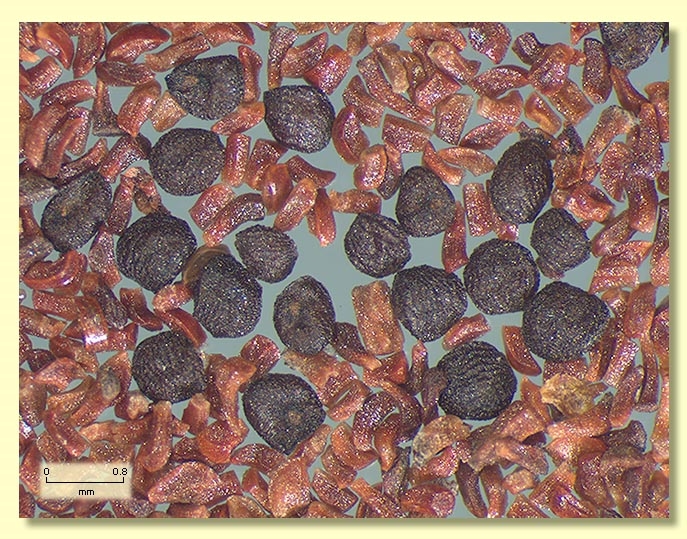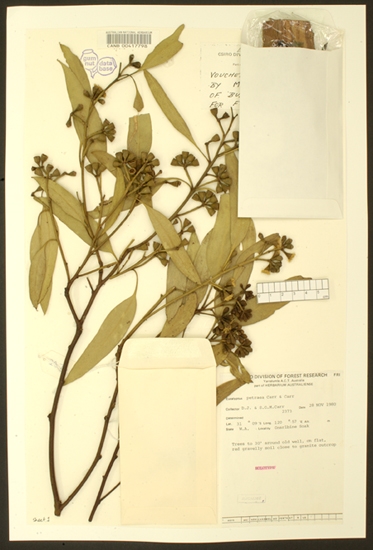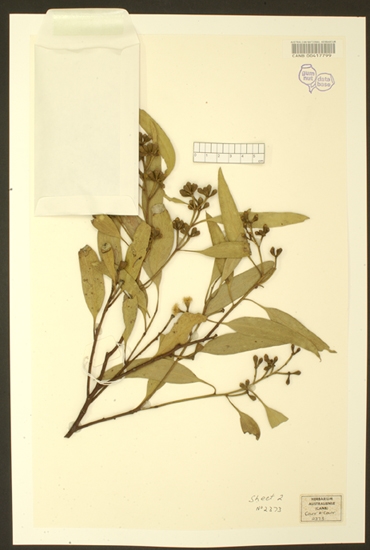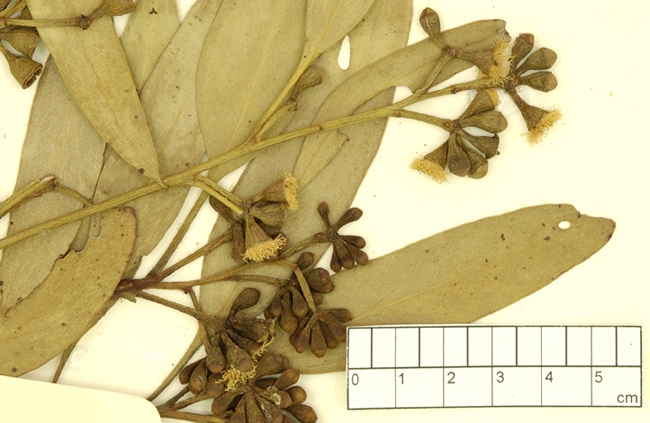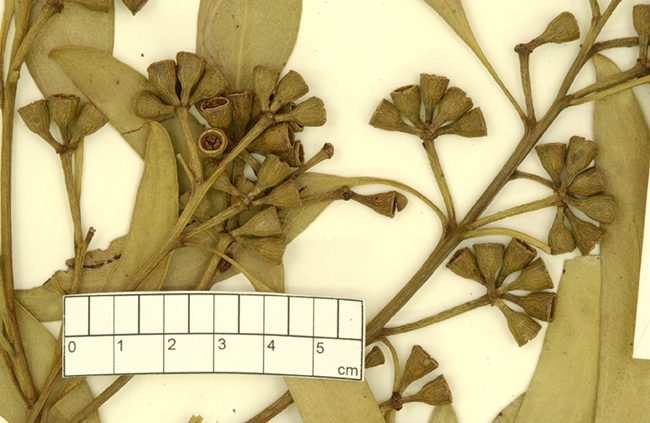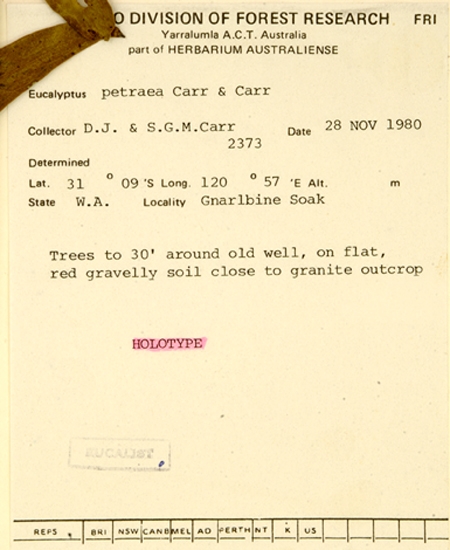Euclid - Online edition
Eucalyptus petraea
Eucalyptus | Symphyomyrtus | Adnataria | Apicales | Buxeales | Continentes
T: Gnarlbine Rock, W.A., 28 Nov. 1980, D.J.Carr & S.G.M.Carr 2373; holo: CANB.
Bark rough, thin, ribbony to flaky to fibrous and fissured over 1–2 m of trunk, bark on upper trunk and branches smooth, pink-grey, whitish grey and dark grey (rarely smooth bark throughout).
Branchlets lacking oil glands in the pith.
Juvenile growth (coppice or field seedlings to 50 cm): stems rounded in cross-section; juvenile leaves always petiolate, alternate, lanceolate, 6.5–9 cm long, 2–3.5 cm wide, lower leaves dull, upper leaves glossy.
Adult leaves alternate, petiole 1.5–3.5 cm long; blade lanceolate to broadly so, 8–14.5 cm long, (1.3)1.5–3.5 cm wide, base tapering to petiole, margin entire, apex pointed, concolorous, green, glossy, side-veins at an acute or wider angle to midrib, reticulation moderate to dense, sometimes incomplete, intramarginal vein remote from margin, oil glands island and intersectional or obscure.
Inflorescence terminal compound, peduncles 0.7–2.2 cm long, buds (3)7 per umbel, pedicels (0.1)0.3–0.7 cm long. Mature buds obovoid, 0.6–0.9 cm long, 0.4–0.7 cm wide, scar usually absent (outer operculum sheds late in bud development just prior to flowering or both opercula shed together at flowering), operculum bluntly conical, stamens inflexed, outer filaments without anthers (staminodes), the shorter inner stamens fertile, anthers cuboid, more or less versatile, sub-basifixed, dehiscing by sub-terminal pores, style long and straight, stigma more or less pin-head shaped, locules 5(6), the placentae each with 4 vertical rows of ovules. Flowers creamy white.
Fruit on pedicels 0.2–0.8 cm long, rarely sessile, obconical, 0.4–1 cm long, 0.5–1 cm wide, disc descending, valves 5(6), enclosed (a polygonal "lid", usually with the stub of the style in the centre, sheds from the capsule when it opens and what remains of the valves retract to the inner wall).
Seeds dark brown, 0.8–1.5 mm long, ovoid to flattened-ovoid, dorsal surface shallowly reticulate, hilum ventral.
Cultivated seedlings (measured at node 10): cotyledons reniform to ± oblong; stems rounded to square in cross-section; leaves always petiolate, opposite for 4 to 5 nodes then alternate, ovate, 8–10 cm long, 3.5–5 cm long, dull, green but sometimes with a slight waxy bloom.
Flowering has been recorded in January, February, August and September.
A mallee endemic to Western Australia, occurring from Coorow in the northern wheatbelt to east of Kalgoorlie, always in association with exposed granite rock. The bark is rough on the lower half of the stems and the adult leaves very glossy green with the intramarginal vein well removed from the edge.
E. petraea is the only species in southern Western Australia that can be identified by the combination of terminal inflorescence, buds lacking an operculum scar and staminodes present. Within its natural distribution it is unlikely to be confused with anything else.
Its close relative, E. lansdowneana, differs in having a very slender arching habit, drooping crown and larger, red flowers. It occurs on rocky slopes only in the Gawler Range on the upper Eyre Peninsula, South Australia.
Eucalyptus petraea belongs in Eucalyptus subgenus Symphyomyrtus section Adnataria (the boxes) because the buds have two opercula, ovules are in four rows, seeds are flattened-ovoid, cotyledons are reniform, and anthers are rigid on the staminal filaments. Within section Adnataria, E. petraea is part of a subgroup, series Buxeales subseries Continentes, further distinguished by having terminal inflorescences and buds that retain the outer operculum until flowering time when both opercula are shed together. Most species in this group are from eastern Australia and have all stamens fertile. Two species, however, have a more westerly distribution—E. lansdowneana in South Australia and E. petraea—and are unusual in having some sterile outer stamens (staminodes) as well as inner fertile stamens.






